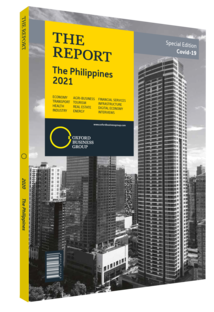How are Philippine consumer goods producers adapting to supply disruption?
In response to lockdowns initiated to stem the spread of Covid-19, fast-moving consumer goods (FMCG) manufacturers in the Philippines adopted new business strategies to overcome supply chain disruptions and meet shifting consumer demands. Indeed, the pandemic led FMCG companies to reassess input sources and re-evaluate the balance between efficiency and resilience. It is expected that these structural changes will last beyond the pandemic.
Just in Case
Prior to the emergence of Covid-19, a just-in-time model had gained popularity with FMCG manufacturers around the world. Such a model offers a cost-effective solution with minimum inventories that maximises storage space and supply chain efficiency. During the pandemic period, however, local and global supply chains were impacted by movement restrictions. Many companies were forced to diversify their sourcing partners and turned to local players in particular. This sparked discussions worldwide of the benefits of a just-in-case model, which emphasises supply chain flexibility and resilience in the FMCG segment.
The mid-March announcement of a strict stay-athome order in the Philippines saw many consumers rush to grocery stores to stock up on supplies. FMCG companies quickly adapted their supply chain operations to the spike in demand, and consumers were not faced with noticeable long-term shortages.
Indeed, the simpler supply chains, more efficient stock management and lower storage requirements of the just-in-case model offered lower costs for both companies and consumers. It therefore seems likely that many FMCG players in the Philippines will continue to use this strategy, at least in part, after the pandemic.
Local Sourcing
Domestic manufacturers offer certain advantages compared to their overseas counterparts. They are often smaller and thus adapt more easily to changing demand, and they may also have more product specialisation as they focus on fewer – or even one – markets. However, strict local sourcing is not always possible. For example, Nestlé buys 60% of all coffee beans produced in the Philippines, but this only meets 30% of its needs in the country. “Some inputs are not yet fully available or in sufficient supply to meet demand at home,” Kais Marzouki, chairman and CEO of Nestlé Philippines, told OBG. It therefore seems likely that many local supply chains will combine domestic and global components into the future.
Changing Habits
According to Fitch Solutions, the research and risk analysis arm of credit ratings agency Fitch, household spending will grow at a slower rate in 2020, at 6.7%, compared to 9.8% in 2019. However, certain segments are expected to be beneficiaries of changing consumer priorities.
Two trends have been seen in consumer habits since the onset of the pandemic: the move towards at-home cooking as Filipinos sought to maintain social distance, and an increased focus on health, nutrition and higher-quality food products. Meanwhile, data analytics firm Nielsen identified the disruption to routine purchases – either by limited availability of go-to products due to short-term supply chain disruptions in the initial phases of the pandemic or a lack of access to grocery stores – as a unique opportunity for FMCG players to expand their market share in an environment that was previously characterised by consistent brand loyalty.
In addition to spurring product innovation in line with consumer preferences, brands will need to communicate their relevance to the new normal in order to capitalise on these opportunities. In light of economic challenges, Nielsen further expects value to remain a key determinant of products in the consumer basket, along with proximity and convenience. This could, for instance, translate into a wider variety of products, adjusted package sizes and an integrated online shopping experience. The pandemic period therefore looks set to bring about long-term structural changes as FMCG players reconsider their offerings and adapt their business strategies to meet evolving consumer needs.
You have reached the limit of premium articles you can view for free.
Choose from the options below to purchase print or digital editions of our Reports. You can also purchase a website subscription giving you unlimited access to all of our Reports online for 12 months.
If you have already purchased this Report or have a website subscription, please login to continue.

